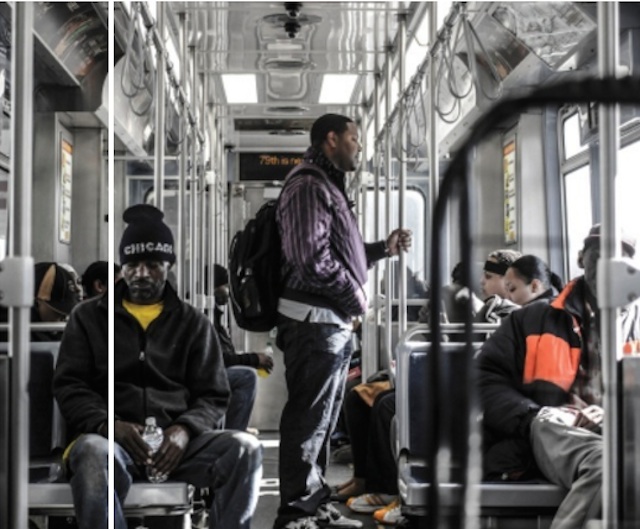Urban League Aims To Boost Black Education, Employment With 10-Year Plan
By Gwendolyn Purdom in News on Aug 11, 2016 2:09PM

Photo of a Red Line car near 75th from photographer Austyn Wyche's series exploring Chicago's segregation problem (Photo by Austyn Wyche)
The Chicago Urban League pledged Wednesday to significantly improve educational, employment and economic opportunities for the city's African American population by 2026, according to a new plan laid out by the non-profit. At a time when the vast disparities between the experiences that white Americans and African Americans can have in this country is under a national spotlight, the League's organizers say their plan aims to undo the damage done by years of inequality "brick by brick."
The group's "Blueprint for an Equitable Chicago" plan details several goals the 100-year-old advocacy group hopes to meet: increasing high school graduation rates among African American students by 15 percent, increasing African American youth employment rates by 30 percent, increasing African American adult employment rates by 20 percent, increasing African American business ownership rates by 5 percent, and increasing African American home ownership rates by 10 percent, among other goals.
Stephanie Schmitz Bechteler, the League's vice president and executive director of its Research and Policy Center, said in the release that her goal is to "make racial equity a reality":
"Our vision is that by 2026, residents of every community area in Chicago will have access to the services and supports they need not just to succeed, but to really thrive."
Chicago's decades of well-documented systematic segregation are cited as the root of many of the problems the city's predominantly African American neighborhoods face. It's a topic the League has explored in depth in the past. In March, the group published "100 Years and Counting: The Enduring Legacy of Racial Residential Segregation in Chicago in the Post-Civil Rights Era," a study that examined how dividing the city by skin color has impacted everything from how long it takes for an Englewood resident to get to a higher wage job in suburban Oak Brook on public transportation (two hours and 12 minutes) to the disparity between the percentage of owner-occupied residences in the city overall (49 percent) and the percentage of owner-occupied residences in the Austin neighborhood on the city's West Side (29 percent).
To combat these deep-seated structures and practices, the League and its partner organizations plan to secure resources and support for mentoring programs, improved mental health care in schools, internships for students, sector-based training for adults, public/private partnerships to promote hiring in target neighborhoods, programming to increase financial stability for home and business ownership and more.
The League also noted that guns and violence are among "the most pressing public health
issues facing some of our communities in Chicago," and said it will additionally funnel resources to address gun violence and trafficking in the city.
By changing the narrative of why these inequities exist, tackling the issues' causes instead of their symptoms, and encouraging investment in the 19 of Chicago's 77 community areas that qualify as racially concentrated areas of poverty, the group is hoping its efforts, though ambitious, will benefit more than just its targeted areas.
"When this happens," Bechteler said, "it sets the stage for a stronger African American community; and that, in turn, makes a stronger Chicago,”